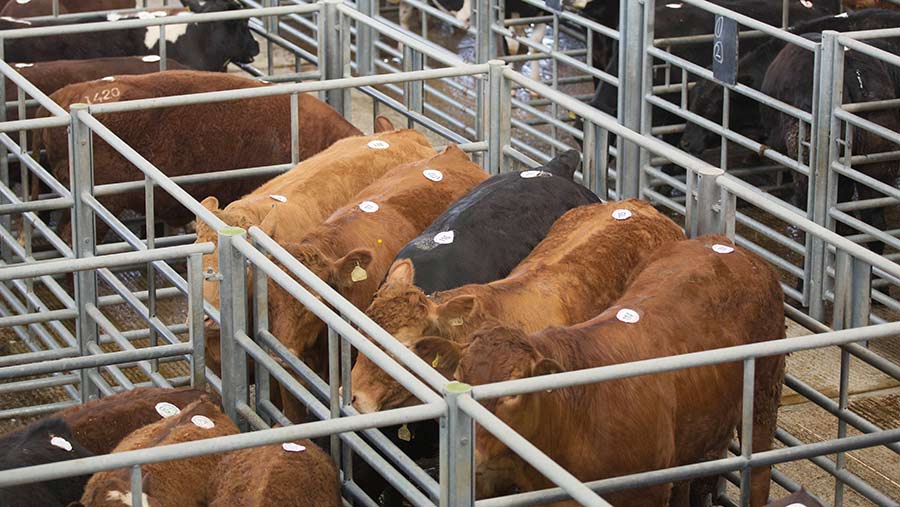Scottish beef at 10p/kg premium over England and Wales
 © Tim Scrivener
© Tim Scrivener Cattle prices in Scotland are currently about 10p/kg higher in the live ring and 15p/kg higher deadweight than south of the border.
Premiums have been paid in Scotland for a number of years, supported by the protected geographical indication (PGI) status for Scotch Beef and strong consumer demand for these products, but this margin has narrowed since October 2022.
Deadweight steers in Scotland have been bordering on £5/kg deadweight, which is 15p/kg higher than the GB average, but the Scottish premium was more than 20p/kg this time last year.
See also: Strong prices prompts call for more beef marketing groups
The all-prime average for cattle at Scottish auction markets was 269.1p/kg liveweight for the week ending 14 October, compared with 258.8p/kg for England and Wales.
Liveweight cattle prices in Scotland remain about 20p/kg above last year’s levels, despite prices easing back slightly in recent weeks.
At St Boswells Mart on 16 October, liveweight steers averaged 282p/kg and sold to 314p/kg, while heifers averaged 290p/kg.
Auctioneers said there was a good selection of cattle with all types easily sold.
Meanwhile, at Caledonian Marts in Stirling, steers averaged 270.8p/kg liveweight, while heifers averaged 305.4p/kg last week with a number of heavier cattle coming forward.
Increased numbers at Scottish marts
Auction markets in Scotland increased both throughputs and revenue during 2022 with 2.76 million head of livestock sold at a total value of £605m, according to the Institute of Auctioneers and Appraisers in Scotland (IAAS).
Sheep numbers were up overall, but total cattle throughputs fell by more than 3.5% on the year.
IAAS president Alan Hutcheon said supplies of young cattle remains tight against demand, which is driving the store cattle trade higher.
Mr Hutcheon said: “Good-quality breeding cattle are still in demand, but any stock not reaching the quality demanded by buyers is proving more difficult to move at the moment.
“This is what underpins our view that the breeding herd continues to contract at a higher rate than the long-term average.”
